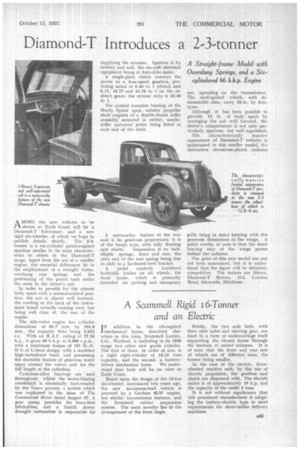A Scammell Rigid i 6-Tonner and an Electric I N addition to the oil-engined
Page 61

If you've noticed an error in this article please click here to report it so we can fix it.
mechanical horse, described elsewhere in this issue, Scammell Lorries, Ltd., Watford, is including in its 1938 range two other neW goods vehicles. The first of these, in order of size, is a rigid eight-wheeler of 15-16 tons capacity, and the second, a batterydriven mechanical horse. We understand that both will be on view at Earls Court.
Based upon the design of the 13-ton six-wheeler, introduced two years ago, the new maximum-load vehicle is powered by a Gardner 6LW engine, has similar transmission features, and the Scammell rubber suspension system. The main novelty lies in the arrangement of the front bogie. Briefly, the two axle beds, with their stub axles and steering gear, are fixed to a form of undercarriage itself supporting the chassis frame through the medium of rubber columns. It is of note that the front and rear sets of wheels are of different sizes, the former being smaller.
In the case of the electric, three-wheeled tractive unit, by the use of electric propulsion, the gearbox and clutch are dispensed with. The electric motor is of approximately 10 h.p. and the capacity of the outfit 4 tons.
It is not without significance that this prominent manufacturer is adopting the battery-electric type to meet requirements for short-radius delivery machines.




































































































